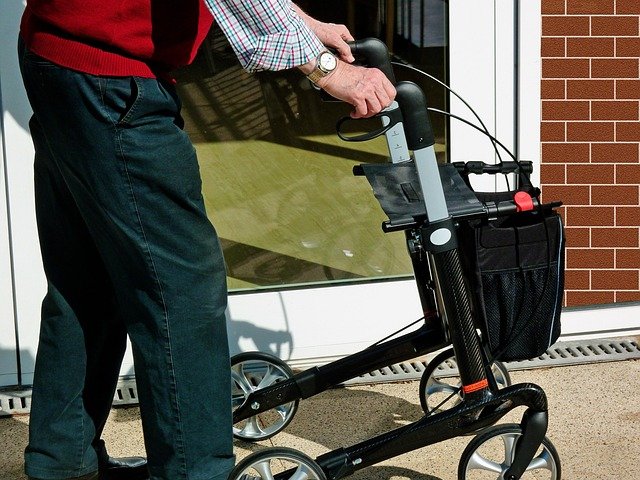Wheelchair Ramps: Essential Accessibility Solutions for Home
Wheelchair ramps make spaces more accessible by providing a smooth and safe path over steps, curbs, and uneven surfaces. Designed for durability and ease of use, they help people with mobility challenges move independently and confidently in homes, buildings, and public areas.

What Are Wheelchair Ramps for Stairs?
Wheelchair ramps for stairs serve as inclined pathways that allow wheelchair users to navigate elevation changes safely. These ramps replace or supplement traditional staircases, providing a gradual slope that wheelchair users can traverse independently or with minimal assistance. Most residential stair ramps are designed with a 1:12 slope ratio, meaning for every inch of vertical rise, there should be 12 inches of ramp length to ensure safe navigation.
Stair ramps come in various materials including aluminum, steel, and wood. Aluminum ramps are particularly popular due to their lightweight nature, corrosion resistance, and durability. These ramps often feature non-slip surfaces, handrails for additional safety, and modular designs that allow for customization based on specific staircase configurations.
How Do Wheelchair Ramps for Doorways Work?
Wheelchair ramps for doorways address the common accessibility challenge posed by raised thresholds and single steps at building entrances. These ramps are typically shorter than stair ramps but equally important for ensuring smooth transitions between indoor and outdoor spaces. Doorway ramps eliminate the jarring impact and potential safety hazards that small elevation changes can create for wheelchair users.
Most doorway ramps are portable and lightweight, making them suitable for temporary or permanent installation. They often feature beveled edges that create seamless transitions and reduce the risk of wheelchair wheels catching on the ramp edges. Some models include fold-down designs for easy storage and transport, while others are designed for permanent installation with mounting hardware.
Choosing the Right Wheelchair Ramp for Your Needs
Selecting an appropriate wheelchair ramp requires careful consideration of several factors including the height difference to overcome, available space, frequency of use, and budget constraints. Temporary ramps offer flexibility and can be moved as needed, making them ideal for rental properties or situations where permanent installation isn’t feasible.
Permanent ramps provide long-term stability and often comply with Americans with Disabilities Act (ADA) guidelines more comprehensively. These installations typically require professional measurement and installation to ensure proper slope calculations, adequate width for wheelchair maneuverability, and appropriate safety features such as handrails and landing platforms.
Weight capacity is another crucial consideration, as ramps must safely support the combined weight of the user and their mobility device. Most residential ramps support between 600 to 800 pounds, while commercial-grade options can handle significantly more weight.
Cost Considerations and Provider Comparisons
Understanding the financial investment required for wheelchair ramps helps families make informed decisions about accessibility improvements. Costs vary significantly based on ramp type, materials, length, and installation requirements.
| Ramp Type | Provider/Brand | Length Options | Cost Estimation |
|---|---|---|---|
| Portable Doorway Ramp | Prairie View Industries | 2-6 feet | $150-$400 |
| Modular Aluminum System | EZ-Access | 4-32 feet | $800-$4,500 |
| Custom Permanent Installation | Local Contractors | Variable | $3,000-$15,000 |
| Threshold Ramps | Handi-Ramp | 1-3 feet | $75-$250 |
Prices, rates, or cost estimates mentioned in this article are based on the latest available information but may change over time. Independent research is advised before making financial decisions.
Installation and Safety Considerations
Professional installation ensures that wheelchair ramps meet safety standards and local building codes. Many areas require permits for permanent ramp installations, particularly for ramps exceeding certain lengths or heights. Professional installers understand local regulations and can navigate the permit process while ensuring compliance with accessibility guidelines.
Safety features extend beyond proper slope calculations to include appropriate ramp width, landing platforms, and handrail specifications. Adequate lighting, non-slip surfaces, and regular maintenance schedules contribute to long-term safety and functionality. Weather considerations are particularly important for outdoor installations, as materials must withstand local climate conditions without compromising safety or durability.
Maintenance and Long-Term Care
Regular maintenance preserves ramp functionality and extends service life. Aluminum ramps require minimal maintenance but benefit from periodic cleaning and inspection of connection points. Wooden ramps need more frequent attention, including annual sealing or staining to prevent weather damage and regular inspection for loose boards or deteriorating hardware.
Snow and ice removal procedures should be established for outdoor ramps in climates with winter weather. Non-corrosive de-icing products and proper drainage systems help maintain year-round accessibility while protecting ramp materials from damage.
Wheelchair ramps represent essential medical equipment that significantly improves accessibility and independence for individuals with mobility challenges. Whether addressing doorway thresholds or multi-step staircases, these solutions provide safe, reliable access that enhances quality of life. Careful selection, professional installation, and regular maintenance ensure that wheelchair ramps continue serving their vital function for years to come.
This article is for informational purposes only and should not be considered medical advice. Please consult a qualified healthcare professional for personalized guidance and treatment.




